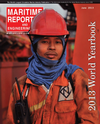
If in Doubt, Ask the Doctor: Is it Time to Buy?
Trends in asset prices are generally important for vessel owners, banks who lend against them as well as commercial interests who make opportunistic acquisitions in times of depressed asset values. These trends however are for generic vessel types which are generalized from realized data consisting of actual sale and purchase (S&P) activity. We choose three representative vessel size categories from the dry and wet markets respectively and one size category from the Liquefied Petroleum Gas (LPG) markets. There are empirical challenges which we have to overcome at Vesselsvalue.com in terms of relative illiquidity in certain segments as well as heterogeneity in the asset classes, i.e. two vessels in the same size category may contain varying specifications which are factored into our pricing model.
Vessels prices are conditioned on five fundamental determinants. We base our valuation models at VesselsValue.com on these fundamentals which come handy while explaining the relatively “flat” structure of the asset prices over the past year. The earning capacity of the vessels is a key component affecting the S&P activity and we find that there is a strong correlation between the two. Since the earnings of the vessel are close to the operating costs in most of the dry and wet categories with a proportional squeeze in margins. The earnings are conditioned on the supply for freight and the global demand for the transportation of bulk commodities. The oversupply of tonnage coupled with new deliveries has posed two main problems on the supply side in recent times.
The number of ships competing for hire has increased at a larger rate (due to new deliveries) than that of the demand for freight (measured in ton-miles). Scrapping or demolition activity, which is supposed to restore equilibrium by removing some of the excess supply of vessels. However as seen in the graph (average age of fleet), the fleet is relatively young with averages of slightly over seven years and therefore a slowdown in the demolition activity. An example of oversupply and potential impact in the freight and the S&P markets can be made in the crude carriers where a around 8m dwt of capacity has been delivered with a further 30m dwt due to be delivered by the end of 2014 representing a 4% increase in the fleet (subject to current demolition rates). In contrast, the demand for the freight is expected to be lower at around 2% with consequent downward pressure on the freight rates and therefore the asset prices.
This might be seen as an opportunity to purchase vessels at their lowest relative prices by opportunistic buyers since there are two favorable aspects for the wet sector. The first is that the fleet to order book ratio is set to decline in the future and the demand for freight predicted to increase following an economic turnaround in the near future.
Additional factors that contribute to the changes in the vessels valuation are the type, specifications and age of the vessel. Though there is a large interest in purchasing vessels of a higher specification especially fuel efficient engines, we feel that these three factors have not made a significant impact on the changes in the vessels prices over the past year.
Capt. Kaizad Doctor, PhD,
Director of Analytics, VesselValue.com
Kaizad is responsible for empirical research, statistical and computational modeling, database management and new product development and optimization of existing systems. He has written several academic papers in the field of shipping economics, asset pricing and valuation, statistical arbitrage and applied econometrics. Kaizad had an extensive seagoing career with Exxon Mobil and Mitsui on LPG, VLCC’s and dry bulk carriers culminating with two years in command of Panamax vessels. He has an MSc in Shipping Trade and Finance (with Distinction), an MRes in Finance (with Distinction) as well as a PhD in finance from the Cass Business School. He enjoys teaching courses in quantitative methods, probability theory and econometrics at the masters and undergraduate level. E: [email protected] W: www.vesselsvalue.com
Read If in Doubt, Ask the Doctor: Is it Time to Buy? in Pdf, Flash or Html5 edition of June 2013 Maritime Reporter
Other stories from June 2013 issue
Content
- “Lies, Damned Lies & Statistics” page: 6
- Maersk Rate Hikes Hitting the High Notes page: 8
- Does Svitzer Dominate the Indian Salvage Scene? page: 8
- What You Need to Know to Operate Offshore Brazil page: 10
- Why TWIC? page: 14
- Cargo Morphs in New Directions page: 16
- Annual Economic Sanctions Update page: 18
- Infrastructure for Alaska’s LNG and Other Resources page: 22
- Non-Tankers Next on OPA 90 List page: 26
- Sail Safe BC Ferries’ Safety Initiative page: 30
- Simulation Trends of Tomorrow page: 32
- Economic Impacts of STCW 2010 page: 34
- Breaking Down The Cost of MARPOL page: 36
- The Year in Review page: 40
- Dr. Shashi Kumar page: 44
- Boxed In page: 46
- Contamination Controlled page: 48
- If in Doubt, Ask the Doctor: Is it Time to Buy? page: 52
- Finnish Shipbuilding and Arctic Operations page: 54
- Irving Plans for the Future page: 55
- German Shipbuilding Prospects are Fair & Partly Cloudy page: 58
- Hull Medic: Keep Coats Efficient page: 72
- Diesel-Electric Units Prepared for Navy’s AGOR Project page: 73
- Integrated Bridge Shaping the Future page: 74


